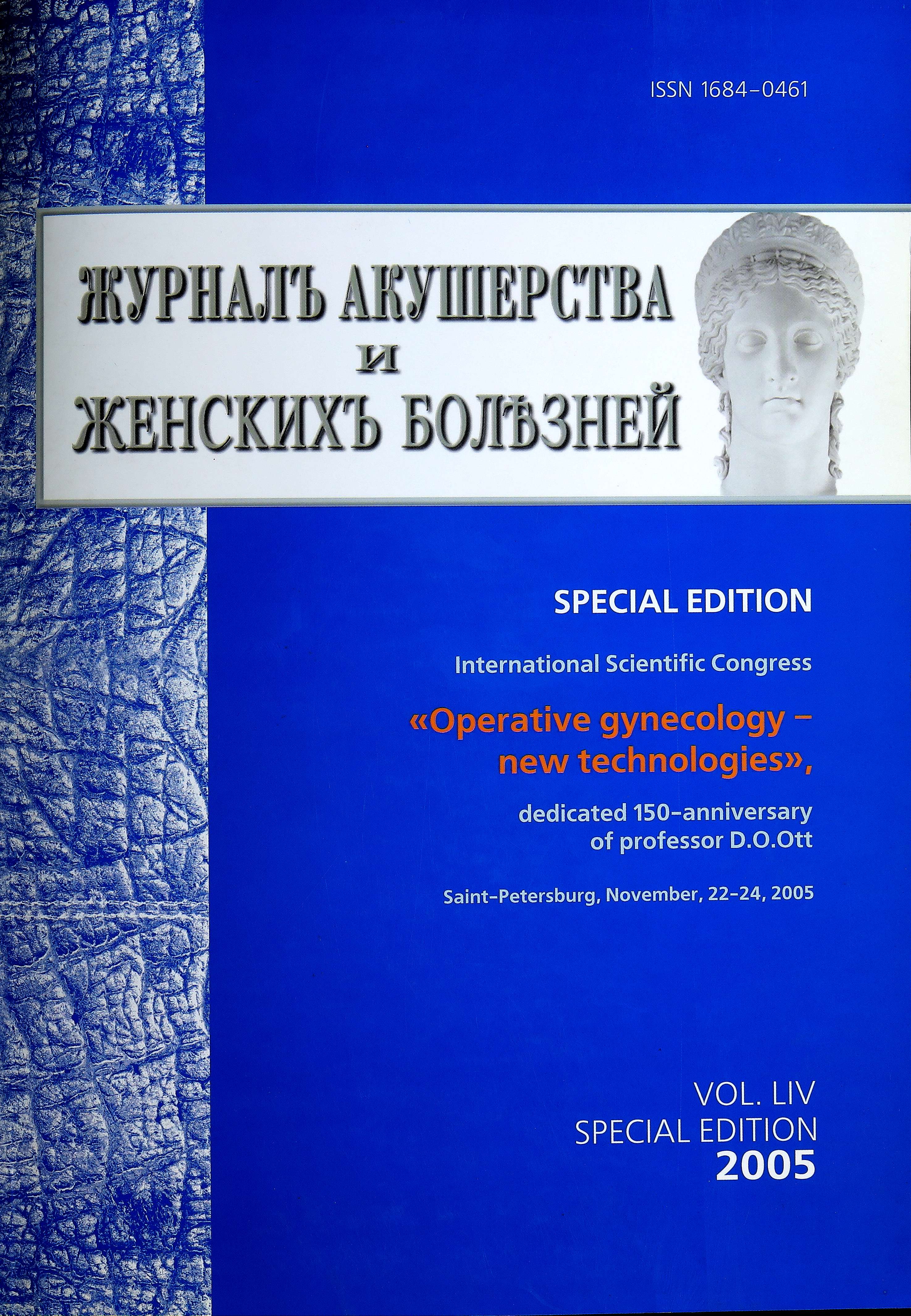The experience of laparoscopically assisted vaginal hysterectomy
- Authors: Sosnin N.A.1
-
Affiliations:
- FGU Northern Medical center named after N.A Semashko Ministry of Health
- Issue: Vol 54, No 5S (2005)
- Pages: 41-42
- Section: Reviews
- Submitted: 15.11.2005
- Accepted: 08.11.2021
- Published: 15.11.2005
- URL: https://journals.eco-vector.com/jowd/article/view/87368
- DOI: https://doi.org/10.17816/JOWD87368
- ID: 87368
Cite item
Abstract
Introduction. Surgical laparoscopy has been widely adopted in gynecological practice. The first laparoscopic operation was carried out in our center in 1991. Lately different types of laparoscopic hysterectomy have been applied in surgical gynecology. In our clinic we widely use laparoscopically assisted vaginal hysterectomy, which was first performed here in 1996.
Full Text
Introduction. Surgical laparoscopy has been widely adopted in gynecological practice. The first laparoscopic operation was carried out in our center in 1991. Lately different types of laparoscopic hysterectomy have been applied in surgical gynecology. In our clinic we widely use laparoscopically assisted vaginal hysterectomy, which was first performed here in 1996.
Material and methods. Within the period between 2000 and 2004 we did 68 vaginal extirpations of womb, 28 of them laparoscopically assisted. Laparoscopy stage was fulfilled with the apparatus “Karl Storz” (Germany). Recommendations for the surgical treatment were as follows: prolapse of the womb walls, elongation of the cervix of the uterus combined with myoma, adenomyosis, recurrent hyperplasia of endometrium and cysts of ovaries. The average patients’ age is 54 years (varying from 38 to 73).The operation consists of two stages - laparoscopic and vaginal. Laparoscopy allows performing the division of commissures, excision and coagulation of the centers of endometriosis, ablation
of adnexa of the womb, immobilization of ligaments, dissection and separation of ligaments, immobilization of the womb vessels. All the following stages of the operation are performed traditionally for vaginal hysterectomy.
Results. Compared to the “pure” vaginal hysterectomy the differences are as follows: the usage of laparoscopy reduces traumatisation of tissues, and consequently, blood loss during the operation from 300,0 ml to 100,0 - 150,0 ml; patients endure the combined method of surgery much easier which cuts down their post-operation staying in hospital from 12,3 to 6,2 days. The operation time varied between 85 and 160 minutes depending on the intensity of pathology and the surgeon’s skills. The post-operation period is characterized by quicker recovery of patients, for anesthesia non-narcotic analgesics were adequately used. Pre- and intra- operational prevention of infectious complications (Metrogil, Cefasolin) proved to be enough, as a rule. In the first three post-operation days 20% of patients suffered from weaker peristalsis of intestines which was cured traditionally. Complications arising from laparoscopically assisted vaginal hysterectomy have not been registered.
Conclusions. We believe that this method of surgery should be widely used as soon as hospitals have modem endoscopic equipment and instruments. However, the patient’s interests, the surgeon’s experience and the concrete operational situation should come first when considering the possibility of applying laparoscopic hysterectomy.
About the authors
N. A. Sosnin
FGU Northern Medical center named after N.A Semashko Ministry of Health
Author for correspondence.
Email: info@eco-vector.com
Russian Federation, Arkhangelsk
References
Supplementary files







